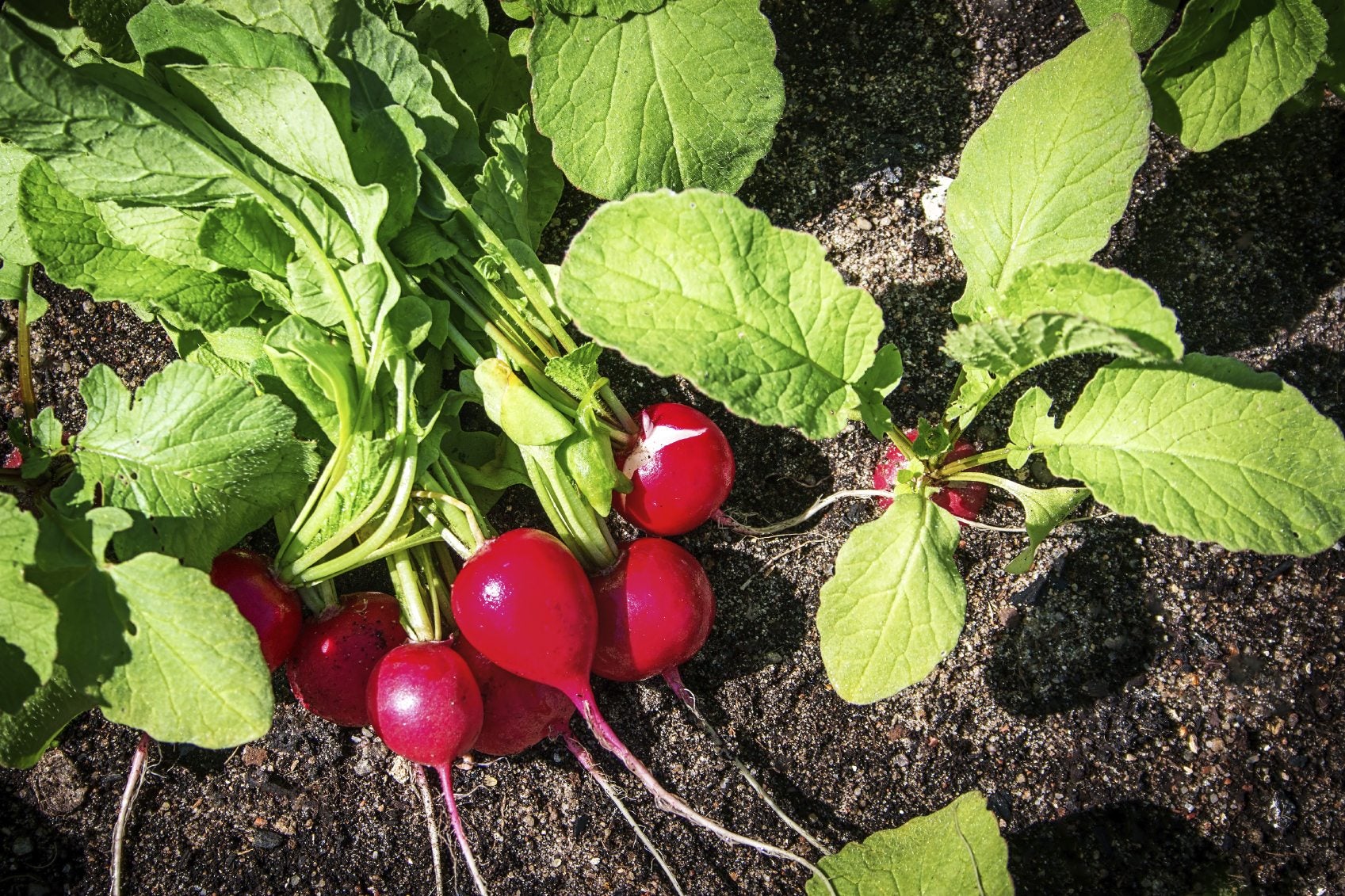Radish Plant Fertilizer: Tips On Fertilizing Radish Plants


Radishes might be the kings of the high reward plants. They grow outrageously fast, with some of them maturing in as little as 22 days. They grow in cool weather, germinating in soil as cold as 40 degrees F. (4 C.), making them one of the first edible things in your vegetable garden each spring. They’re also incredibly easy to grow, taking off and producing with little to no human intervention, apart from some strategic thinning. They do grow better, however, with a little help in the form of radish plant fertilizer. Keep reading to learn about radish plant food and how to fertilize radishes.
Fertilizing Radish Plants
Just before you plant your radishes, you should work some all-purpose fertilizer into the soil. Apply about one pound (0.5 kg.) of 16-20-0 or 10-10-10 fertilizer per 100 square feet (9 sq. m.) of soil. Ideally, you should be planting your seeds in 10 foot (3 m.) long rows spaced 1 foot (31 cm.) apart, but you can scale down for much smaller spaces. Mix the radish plant fertilizer into the top 2 to 4 inches (5-10 cm.) of your soil, then plant your radish seeds ½ to 1 inch (1-2.5 cm.) deep and water them thoroughly. If you don’t want to use commercial fertilizer, the same radish plant food effect can be achieved by working 10 pounds (4.5 kg.) of compost or manure into the soil instead. So, is one time enough when fertilizing radish plants? After you’ve applied your initial all-purpose fertilizer, your radish fertilizer requirements are basically met. If you want to provide a little extra radish plant food to kick your growth into high gear, however, try adding about ¼ cup (85 g.) of nitrogen-rich fertilizer per 10 feet (3 m.) of row to promote fast foliage growth, especially if you plan on consuming the greens.
Gardening tips, videos, info and more delivered right to your inbox!
Sign up for the Gardening Know How newsletter today and receive a free copy of our e-book "How to Grow Delicious Tomatoes".

The only child of a horticulturist and an English teacher, Liz Baessler was destined to become a gardening editor. She has been with Gardening Know how since 2015, and a Senior Editor since 2020. She holds a BA in English from Brandeis University and an MA in English from the University of Geneva, Switzerland. After years of gardening in containers and community garden plots, she finally has a backyard of her own, which she is systematically filling with vegetables and flowers.
-
 Looking For Plants To Give You The Soft And Fuzzies? Try These 5 Fuzzy Leaf Plant Options
Looking For Plants To Give You The Soft And Fuzzies? Try These 5 Fuzzy Leaf Plant OptionsLovers of texture, drama, silver foliage and tactile plants will adore these special sensory garden additions. These fuzzy leaf plant options will leave you all aglow
By Susan Albert
-
 Get Ready For A Summer Of Hummers! Grow These Full Sun Hummingbird Plants and Flowers
Get Ready For A Summer Of Hummers! Grow These Full Sun Hummingbird Plants and FlowersIf you’re lucky enough to enjoy a sunny backyard, make sure you are maxing out on your pollinator opportunities and grow these full sun hummingbird plants and flowers
By Tonya Barnett